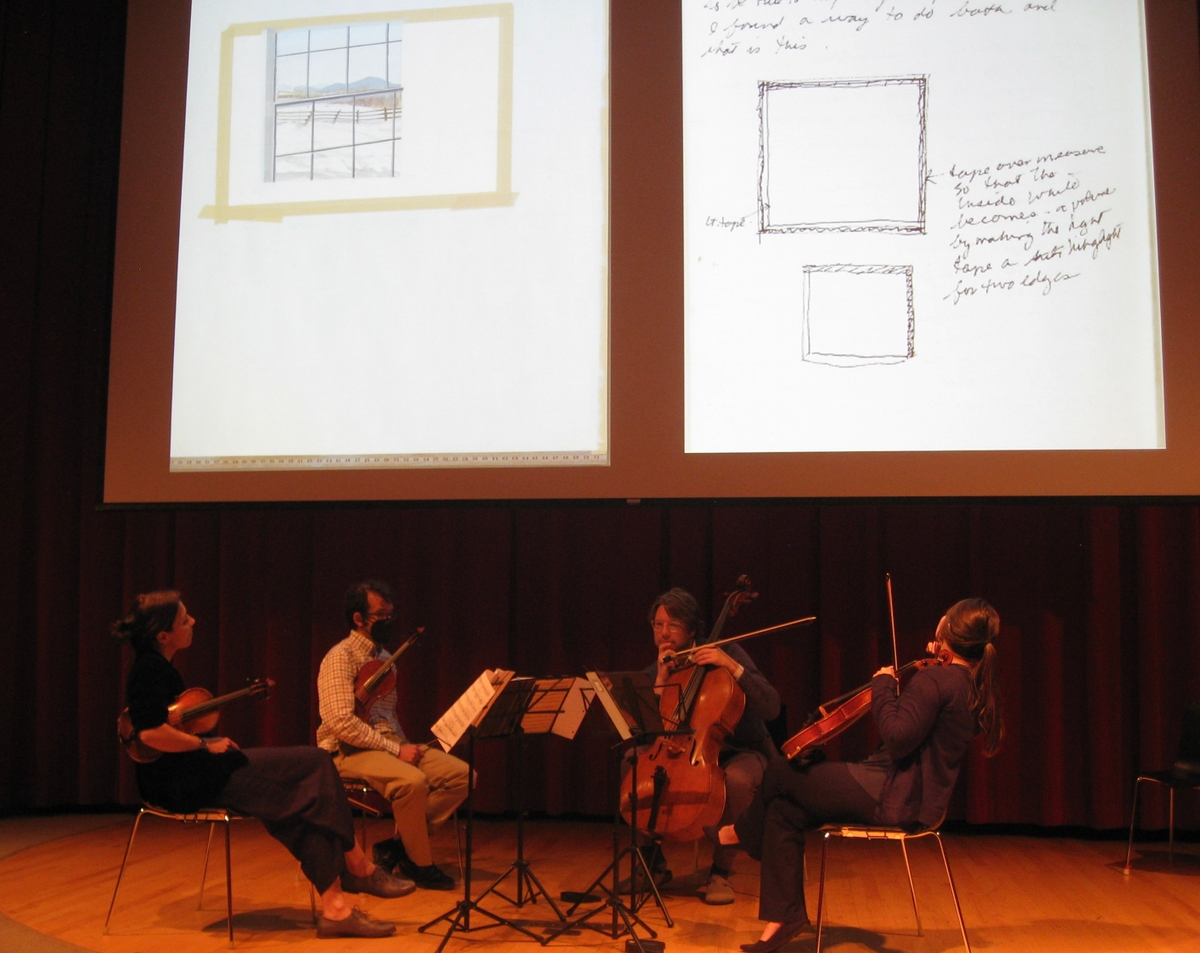
Eleanor Polak Photos
Haven String Quartet at Yale Art Gallery.
“Think about the relationship between listening and looking.”
So encouraged Jessica Sack, curator of public education at the Yale University Art Gallery and organizer of “Playing Images,” at an event that combined artwork with the music of the Haven String Quartet.
On Wednesday afternoon, Sack and her co-coordinator, violinist Yaira Matyakubova — who, along with Gregory Tompkins on violin, Annalisa Boerner on viola, and Philip Boulanger on cello, make up the string quartet in residence at the local classical music education nonprofit Music Haven — combined visual art, music, and audience participation to create an artistic experience that incorporated multiple senses in an immersive event.
Rather than simply looking at a painting, or listening to a concert, visitors were encouraged to pay attention to the connections between the two mediums. Sack was “excited to think about what new things you hear when you’re looking at something, and what new things you see when you’re listening to something.”
What audience members saw was a painting by Sylvia Plimack Mangold. What they heard was an instrumental piece written by Caroline Shaw and performed by the Haven Strings Quartet.
Sack invited attendees to participate, giving them the opportunity to express their impressions of the art and work as a group to expand their understandings.
The painting was a largely white canvas with a window’s view of a snowy landscape bracketed by yellow tape. The audience tossed out words and phrases that they associated with it — “frame within a frame,” “confinement of winter,” “nostalgia,” “loneliness.” The musicians participated in the exercise, collaborating with the audience to untangle the nuances of the painting, as Sack zoomed in and out on certain details.
“Now I’m hoping some of the things you are thinking will be called into question or confirmed,” Sack said, as she turned over the microphone to Matyakubova and the quartet. The audience became increasingly invested as the musicians delved into the piece that they were performing, even playing isolated segments and demonstrating certain techniques.
Shaw’s instrumental was haunting and lingering, evoking a feeling of looking through a pane of glass; it was clear why it had been paired with Mangold’s painting. The music captured a nostalgic sense of memory and revelation.
“All these chords are like a set of questions she’s setting for us,” Matyakubova explained, before demonstrating the chords in question on her violin.
The other members of the quartet took turns elaborating on their interpretations of the music and the techniques they used to create it. “If we cover our strings lightly with our hands and we use the bow, we get nothing but breath,” said Boulanger. He lifted the bow and his cello sang with a mournful, sighing tone. It generates a “special frozen breathy sound in a way that makes the silence a part of the music.” He described the music and the painting as a “perfect pairing … in both pieces there’s so much beauty, but also so much destitution.”
Sack and Matyakubova chose the pieces through a mix of knowledge of their respective repertoire and what Matyakubova called “serendipity.” They are practiced at discovering the parallels between the emotions elicited from different musical and visual pieces, and at helping the audience to find them as well. In this case, both painting and instrumental combined feelings of isolation and longing for the past with innovative methods of presentation. Viewers got the opportunity to not only hear, but have explained the different techniques used by the quartet to create the eerie murmurs in Shaw’s piece. They also gained understanding of Mangold’s painting through perusal of her working notes (a collective hum came from the audience when it was revealed that the tape in the painting was painted on, and not real).
The combination of music and visual art allowed the viewers to experience both in all their layers and nuances. By unpacking the process and components used to create the show, Sack and Matyakubova took something that might appeal to only one of the senses and made it a full-body experience. As one audience member noted, “so often we have music to go throughout our day as background, but this demands that it be in the foreground.” Sack and Matyakubova made sure that everyone at their event looked, listened, and paid attention.